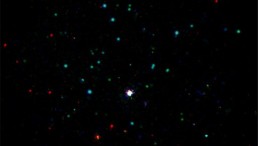Japanese scientists have developed a means of amplifying DNA on a scale suitable for use in the emerging field of DNA-based computing and molecular robotics. The scientists enabled highly-sensitive nucleic acid detection, and their method could improve disease diagnostic and accelerate the development of biosensors, for instance, food and environmental applications.
The University of Electro-communications, Japan, and researchers from Tokyo Institute of Technology, Tokyo Tech, Abbott Japan Co., Ltd, report a way to achieve million-fold DNA amplification and targeted hybridization that works at body temperature (37°C /98.6°F).
The team names the method, L-TEAM that is, Low-Temperature Amplifications, and it is the result of more than five years of study and provides several advantages over traditional PCR, the general practice utilized to amplify DNA segments of interest.
L-TEAM is a 'one-pot,' easy-to-use design that avoids the requirement for heating and cooling steps and specialized equipment usually associated with PCR. That means it is an efficient, inexpensive method that can importantly prevent protein denaturation, thereby opening a new route to real-time analysis of living cells.
They published the results of their study in Organic & Biomolecular Chemistry, and they introduced synthetic molecules called locked nucleic acids (LNAs) into the DNA strands, as these molecules are known to help achieve higher stability during hybridization.
Though with a beneficial result, the addition of LNA led to an unexpected discovery. The researchers observed a reduced level of "leak" amplification, a type of non-specific amplification that has long been an issue in DNA amplification studies as it can lead to a slip-up in the diagnosis of disease, that is, a false positive.
An assistant professor at Tokyo Tech's School of Computing, Ken Komiya, said that they were surprised to find the new effect of LNA in overcoming the common leak problem in DNA amplification reactions. They plan to investigate the mechanisms behind leak amplification in detailed and further improve the sensitivity and speed of L-TEAM.
The team can use the method, shortly, to detect short nucleic acids such as microRNA for medical diagnostics. Most notably, it could aid the test of point-of-care and early disease detection. Recently, researchers are beginning to recognize MicroRNAs as promising biomarkers for cancer detection and may hold the key to uncovering many other aspects of human health and environmental science.
Also, as noted by Komiya, the L-TEAM opens the door for practical use of DNA computing and DNA-controlled molecular robotics. He explained that the original motivation behind this study was the construction of a new amplified module that is essential to build advanced molecular systems. Such systems could provide insights into the operational principles behind living things.













![Blue UFO Spotted in Philadelphia; Object Descends in Delaware River [Watch]](https://1721181113.rsc.cdn77.org/data/thumbs/full/53112/258/146/50/40/blue-ufo-spotted-in-philadelphia-object-descends-in-delaware-river-watch.jpeg)
